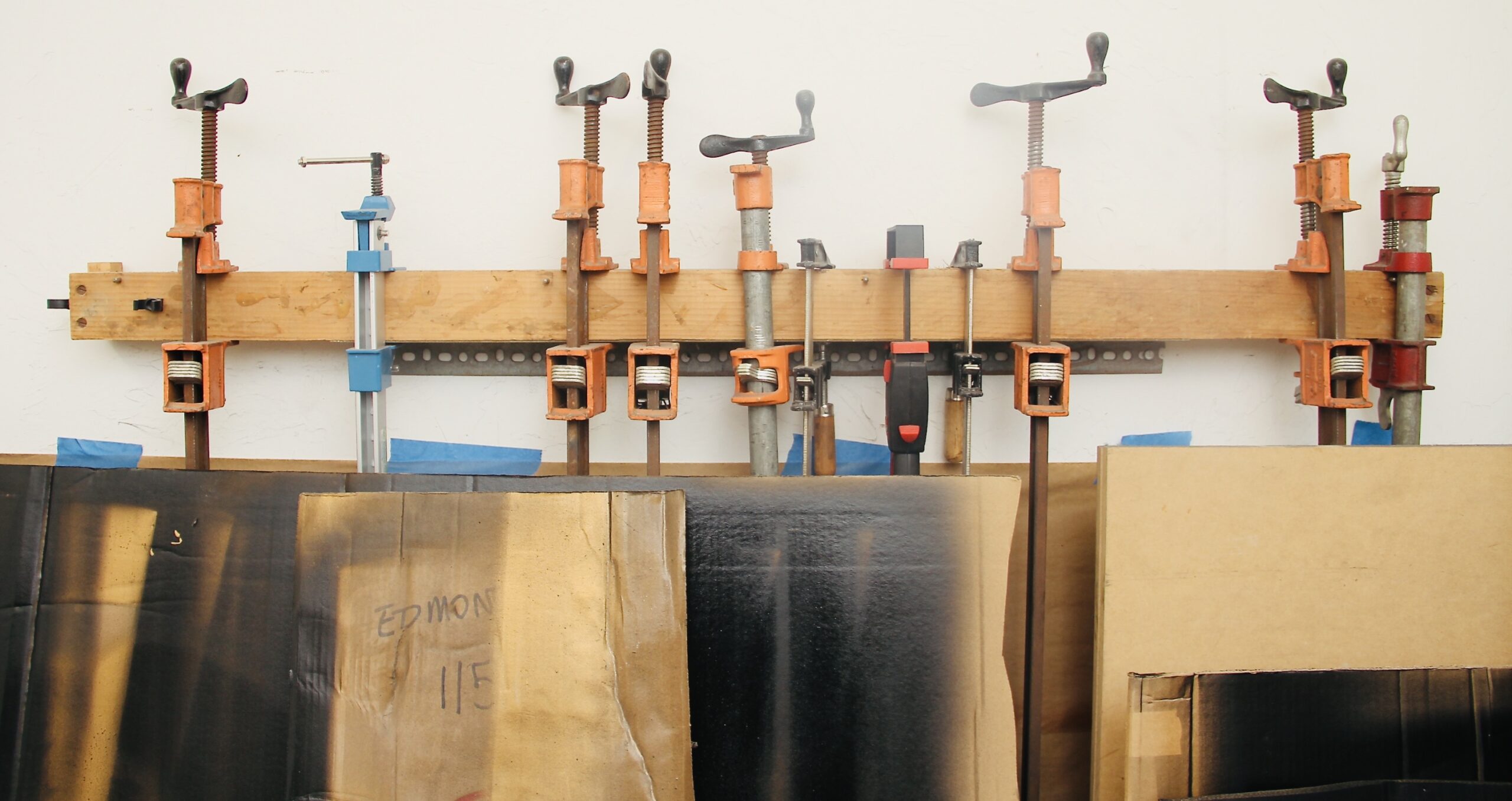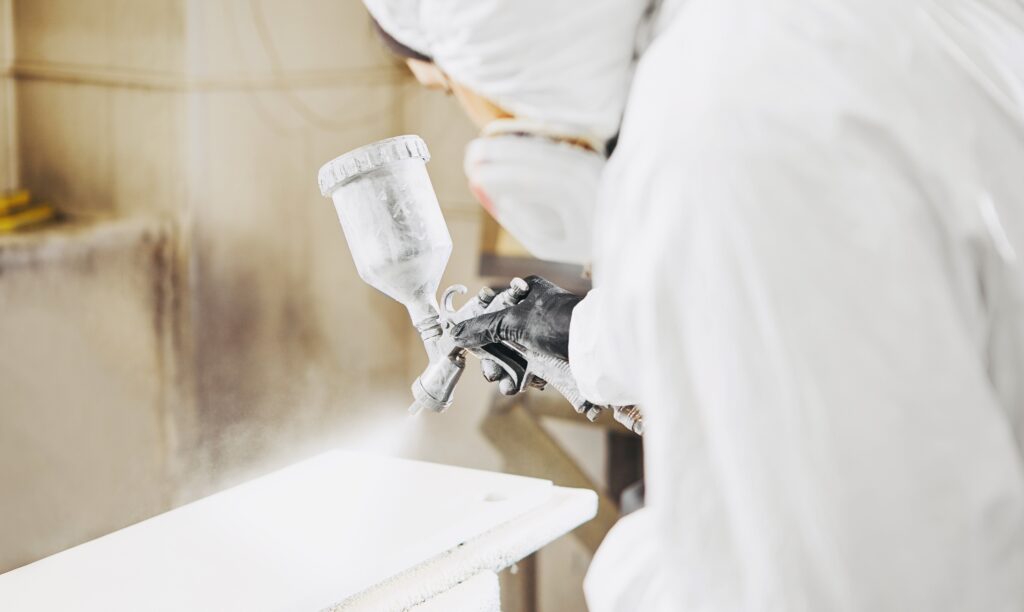Mastering the Art of: Can You Spray Paint Cardboard
Spray painting can be a fun and creative way to transform various surfaces, and that includes cardboard. But Can You Spray Paint Cardboard?

Whether you’re working on a DIY project or adding a personal touch to cardboard decorations, spray painting can provide an excellent finish. However, it’s important to understand the process and consider some essential factors to ensure your cardboard project turns out just as you envision it.
Preparing Your Workspace
Before you go for your spray painting journey with cardboard, it’s a must to set up your workspace and gather the necessary materials:
Well-Ventilated Area: Select a well-ventilated space to carry out your spray painting project. Working outdoors is ideal as it helps dissipate fumes and ensures adequate air circulation.
Drop Cloth or Cardboard: Lay down a drop cloth or additional pieces of cardboard to protect the area where you’ll be painting. This will catch any over-spray and prevent it from reaching other surfaces.
Safety Gear: Wear protective gear such as safety goggles, a respirator mask, and gloves. These items will safeguard you from inhaling fumes and prevent paint from coming into contact with your skin or eyes.
Spray Paint: Choose the right type of spray paint for your cardboard project. Acrylic spray paint is a popular choice for cardboard due to its quick drying time and adherence to porous surfaces.
Primer (Optional): Depending on the cardboard’s condition and the type of paint you’re using, you may want to apply a primer. Primer can help create a smoother surface and improve paint adhesion.
Preparing the Cardboard
The quality of your spray painting project often depends on the preparation of the cardboard surface:
Clean Surface: Ensure the cardboard is clean and free of any dirt, dust, or grease. Wipe it down with a dry or slightly damp cloth to remove any contaminants.
Smoother Imperfections: If the cardboard surface is uneven or has imperfections, you can lightly sand it to create a smoother canvas for your paint.
Priming (Optional): Applying a primer can be particularly beneficial if you’re working with raw or undercoated cardboard. Primer helps the paint adhere better and can result in a more professional finish.
The Spray Painting Process
Now that your workspace is ready and your cardboard is prepared, it’s time to start the spray painting process:
Test Spray: Before you start painting your project, it’s a good idea to perform a test spray on a scrap piece of cardboard. This will help you get a feel for the spray pattern and coverage of the paint.
Maintain Proper Distance: When you begin painting, hold the spray paint can about 8 to 12 inches away from the cardboard. Maintaining the correct distance is key to achieving an even application.
Apply Thin Coats: Instead of one heavy coat, apply multiple thin coats of spray paint. Light, even layers, will prevent the paint from pooling or running. Allow each coat to dry before applying the next.
Keep Moving: To avoid over saturation in one area, keep the spray can and your hand in continuous motion. Begin spraying slightly before the cardboard and continue beyond the edge before releasing the nozzle.
Drying Time: Allow your painted cardboard to dry completely. The time required can vary depending on factors like temperature and humidity. It’s best to consult the paint can label for specific drying recommendations.
Troubles and Tips
As with any DIY project, you may encounter some challenges when spray painting cardboard. Here are some troubleshooting tips and additional advice:
Clogged Nozzle
If the nozzle of your spray paint becomes clogged during your project, pause your work and clean it as per the manufacturer’s instructions. Clogs can occur due to dried paint or debris in the nozzle.
Uneven Spray Pattern
An uneven spray pattern can be resolved by double-checking your settings. Adjust the pressure and nozzle size as needed to achieve the desired pattern. Maintaining a consistent distance and overlapping strokes are crucial for an even coat.
Excessive Over-spray
To reduce over-spray, ensure that the spray gun is not set to too high of a pressure. If over-spray remains an issue, use drop cloths and masking tape to protect adjacent surfaces and areas you don’t want to paint.
Inadequate Coverage
If you find that the paint isn’t covering as expected, you may need to adjust the paint’s dilution or the nozzle size. Experiment with these settings until you achieve the desired coverage.
Safety Precautions
Safety should always be a priority when spray painting, regardless of the surface you’re working on. Here are some essential safety precautions:
Protective Gear
Wear safety goggles, a respirator mask, and gloves to shield yourself from paint fumes and particles. Safety gear is crucial for protecting your eyes, respiratory system, and skin.
Ventilation
Ensure adequate ventilation in your workspace. Open windows and doors to disperse fumes and maintain a comfortable working environment. Proper ventilation reduces the risk of inhaling harmful chemicals.
Fire Safety
Keep your workspace free from potential fire hazards. Store flammable materials away from the painting area and have a fire extinguisher on hand in case of emergencies.

Creative Ideas for Spray-Painted Cardboard
Beyond just the basic technique of spray painting cardboard, there are numerous creative ways to utilize this versatile material. Here are some inspirational ideas to explore:
Cardboard Art
Create stunning pieces of art by spray painting cardboard sheets and then cutting them into various shapes. You can experiment with stencils or freehand designs to express your artistic flair.
Cardboard Stencils
Cardboard is an ideal material for making your stencils. Design and cut out intricate or customized stencils, and then use them to paint patterns on other surfaces like walls, fabric, or more cardboard.
Cardboard Props
If you’re into theater, events, or photography, cardboard can be an economical choice for crafting props. Spray paint your cardboard creations to make them stand out and look more professional.
Custom Cardboard Signage
Need a custom sign for a garage sale, party, or event? Spray-painted cardboard signs are not only eye-catching but also easy to create. You can add lettering, graphics, or decorations to make your signage unique.
Cardboard Decorations
Whether it’s for a birthday party, wedding, or any special occasion, cardboard can be transformed into decorative elements. Spray paint can help you match the theme and colors of your event.
Furniture Makeovers
Cardboard can be used to enhance or update furniture. For example, you can create a faux wood finish or give an old table a modern look with the right spray paint.
Choosing the Right Spray Paint for Cardboard
Selecting the appropriate spray paint for your cardboard project is essential. Various types of spray paint are available, each designed for specific purposes.
Here are some considerations:
Acrylic Spray Paint: Acrylic spray paint is versatile and suitable for cardboard surfaces. It dries quickly and adheres well, making it a popular choice.
Paint Finish: Consider the finish you want. Options include matte, glossy, satin, or metallic. The finish can significantly impact the final look of your project.
Color Selection: Spray paint comes in a wide range of colors. Whether you’re aiming for vibrant or subtle shades, choose a color that complements your project.
Eco-Friendly Options: If you’re environmentally conscious, you can explore eco-friendly or low-VOC (volatile organic compound) spray paint options.
Maintenance and Longevity of Spray-Painted Cardboard
It’s important to note that while spray-painted cardboard can yield beautiful results, it may not be as durable as other materials.
Here are some tips to maintain and prolong the life of your creations:
Protect from Moisture: Cardboard can warp or deteriorate when exposed to moisture. If you’re using cardboard outdoors or in areas prone to humidity, consider applying a clear sealer to protect it.
Avoid Direct Sunlight: Prolonged exposure to direct sunlight can cause colors to fade. If possible, keep your spray-painted cardboard creations out of direct sunlight.
Touch-Ups: Over time, your cardboard project may require touch-ups or additional coats of paint. Keep some extra paint on hand for maintenance.
Storage: Store your cardboard items in a dry, cool place. Avoid placing heavy objects on top of them, which can lead to crushing or warping.
Summing Up
Moreover, spray painting on cardboard can yield impressive results when done correctly. By preparing your workspace, properly preparing the cardboard surface, and following best practices during the spray painting process, you can transform ordinary cardboard into a colorful canvas for your creative projects.
Remember to prioritize safety, choose the right materials, and troubleshoot any issues that may arise along the way. With practice and attention to detail, your spray-painted cardboard creations can be a standout addition to your DIY endeavors.

